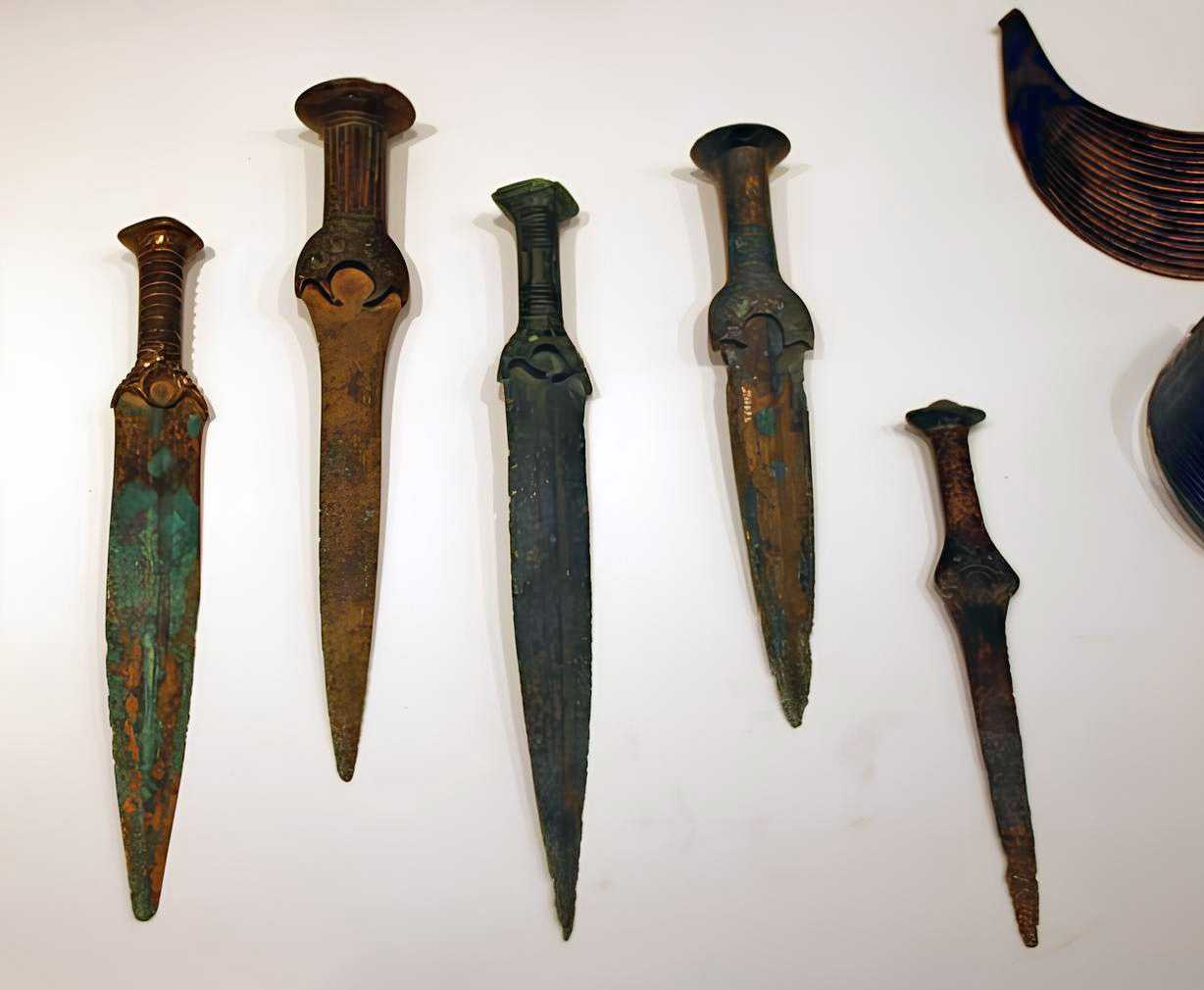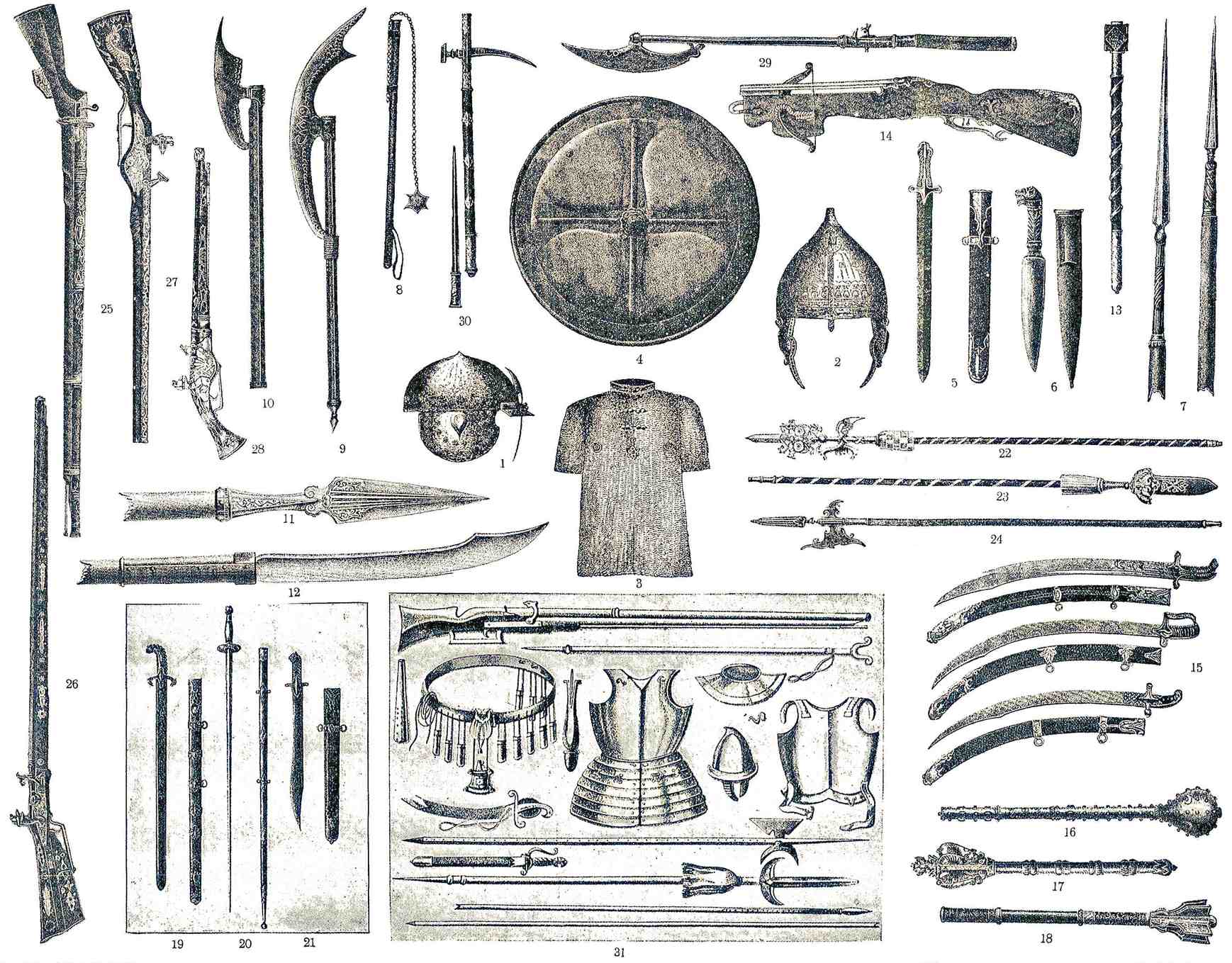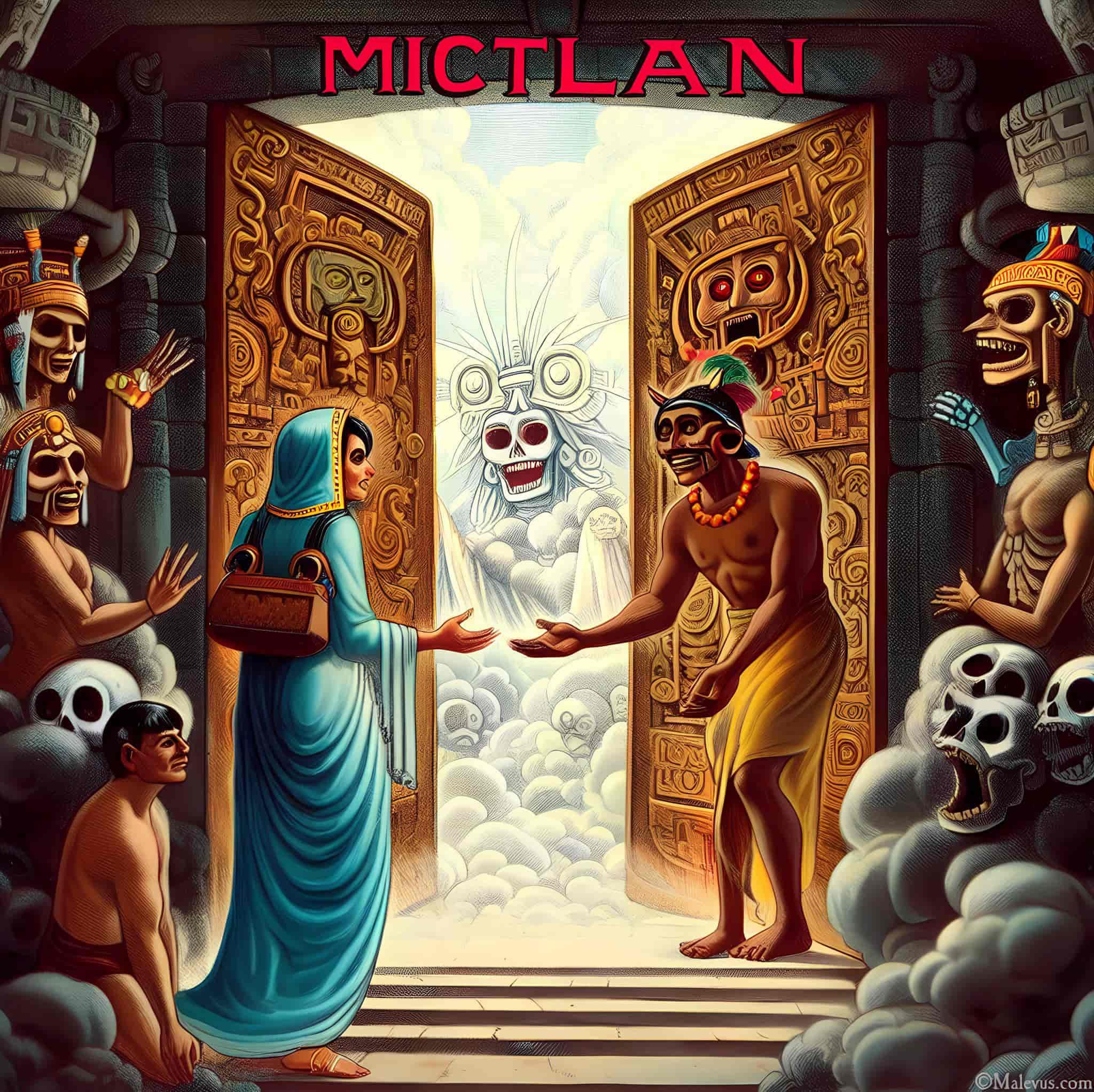The atlatl is a device used to throw spears. It works by extending the throwing arm. The spear accelerates with this motion and reaches a speed of over 90 mph (150 km/h) which is much higher than spears thrown by hand. Hooks placed at the slinging end made of reindeer antlers for guiding the spear have been discovered in Europe and other parts of the world since the end of the Paleolithic Age (Magdalenian Era; 9,000 to 15,000 BC). The atlatl used by Australian Aborigines was called a Woomera. In Central America, the atlatl was still being used as a weapon of war and for hunting at the time of the discovery of America, under the Aztec name Atlatl.
- Definition of Atlatl
- History of Atlatl
- Design of the Atlatl
- How to Use Atlatl
- How Does Atlatl Work?
- The Importance of Atlatl
- Why Did Europeans Start Using the Bow Instead of the Atlatl?
- Atlatl for Hunting
- How to Make an Atlatl Spear Thrower
- Types of Atlatls
- How the Aztec Weapon Atlatl Terrified the Spanish Musketeers
- Atlatl Sport and World Records
- Chronology and Distribution of the Atlatl
- Categorization
- History of Atlatl Research
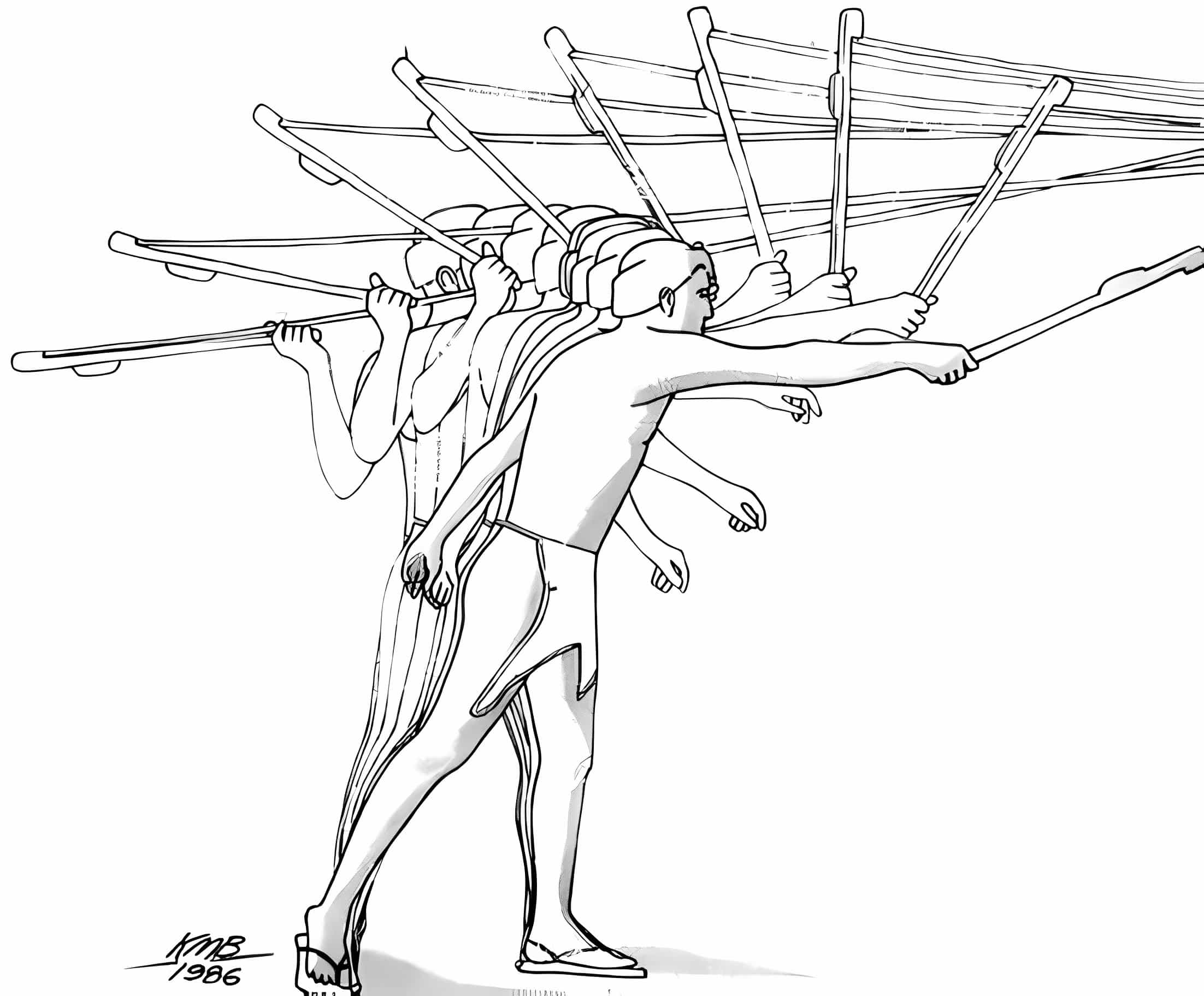
Since the beginning of time, our ancestors have made a lot of weapons to help them hunt, catch wild animals for food, and fight with each other for survival resources. It was these primitive weapons that helped humans climb to the top of the food chain. Among all the weapons used by primitive people, the atlatl, or spear thrower, is a very special weapon. It shows how intelligent early humans were, and in some ways, the atlatl is just as important as the bow and arrow.

To this day, wilderness survival experts and primitive tribal hunters still use this weapon. For example, Matt Graham, a famous wilderness survival expert known for his shows for Discovery and National Geographic, is a loyal fan of the atlatl. With an atlatl in hand, he can easily hit a squirrel at a distance of more than 30 feet (10 meters) and a turkey at a distance of dozens of feet. It is a great tool for wilderness survival. So, what kind of weapon is an atlatl?
Definition of Atlatl

The atlatl is an ancient weapon that was used to throw spears. It is also called the spear-throwing weapon or spear launcher. It is the simplest way to make a spear throw farther, hit harder, and hit with more accuracy. It is a simple but very creative tool. The word atlatl (pronounced AT-lat-uhl) comes from the Nahuatl language of the Aztecs.
History of Atlatl

The earliest prototype of the atlatl can probably be traced back to the Paleolithic era (about 40,000 years ago). But it was first documented archaeologically in Europe about 18,000 years ago in the Upper Solutrean period. Many scholars believe that the atlatl appeared earlier than the bow and arrow, but the atlatl was more difficult to master and required more training. It was on the basis of the atlatl that humans invented the bow. Thus, the position of the atlatl in human history is bound to be even more important than the bow.
The atlatl has existed in human history for a very long time, from the Paleolithic era to the present day, and it has been widely spread across the world. It is a widely used, universal weapon, from the aboriginal people of Australia to the Native Americans, to the Melanesians, and so on. We can see the paintings of the atlatl in various civilizations regarding hunting and fighting.

The atlatls from the Upper Paleolithic are almost exclusively documented as hook throwers. This may be due to the durability of this specific construction type made from reindeer antlers. The hook ends made of reindeer antlers are by far the most common, with only one example known to be made of bone and mammoth ivory.
The hook was attached to a wooden shaft using sloping angles, natural adhesives (probably birch tar), binding materials (sinew, bast), and sometimes through holes. To increase the flight stability of the spear, it was probably feathered. The relatively small number of findings suggests that the majority of atlatls were made entirely of wood.
Design of the Atlatl

The design and shape of the atlatl vary, but generally, its main frame is a slightly curved bone, antler, or wooden board (about 1-3.3 feet or 30-100 cm long). The tail end of the board is equipped with a “hook” (used to hold the notch at the end of the spear) or a crossbar, and the front end of the board is designed with a spear shaft bracket and handle. Worldwide comparisons of complete ethnographic findings reveal an average overall length of 26 inches (65 cm) for atlatls. The length of the spears, whose tips were made of flint or reindeer antler, is reconstructed to be between 83 and 91 inches (2.10 and 2.30 m) based on experiments.
How to Use Atlatl


When using it, the atlatl must be used in conjunction with a spear, just as an arrow must be used with a bow. The user places the elastic-tipped spear on top of the thrower, with the tail end of the spear against the hook-shaped tip of the thrower. The spear’s shaft is parallel to the thrower and is secured in place on the thrower’s spear holder or with the fingers.

The user then extends their arm back and grips the handle of the thrower, forcefully swinging it forward to launch the spear toward the target. The spear can be launched up to a distance of 50 to 330 feet (15 to 100 m), with skilled users able to hit targets the size of a grapefruit at a distance of 130 feet (40 m).
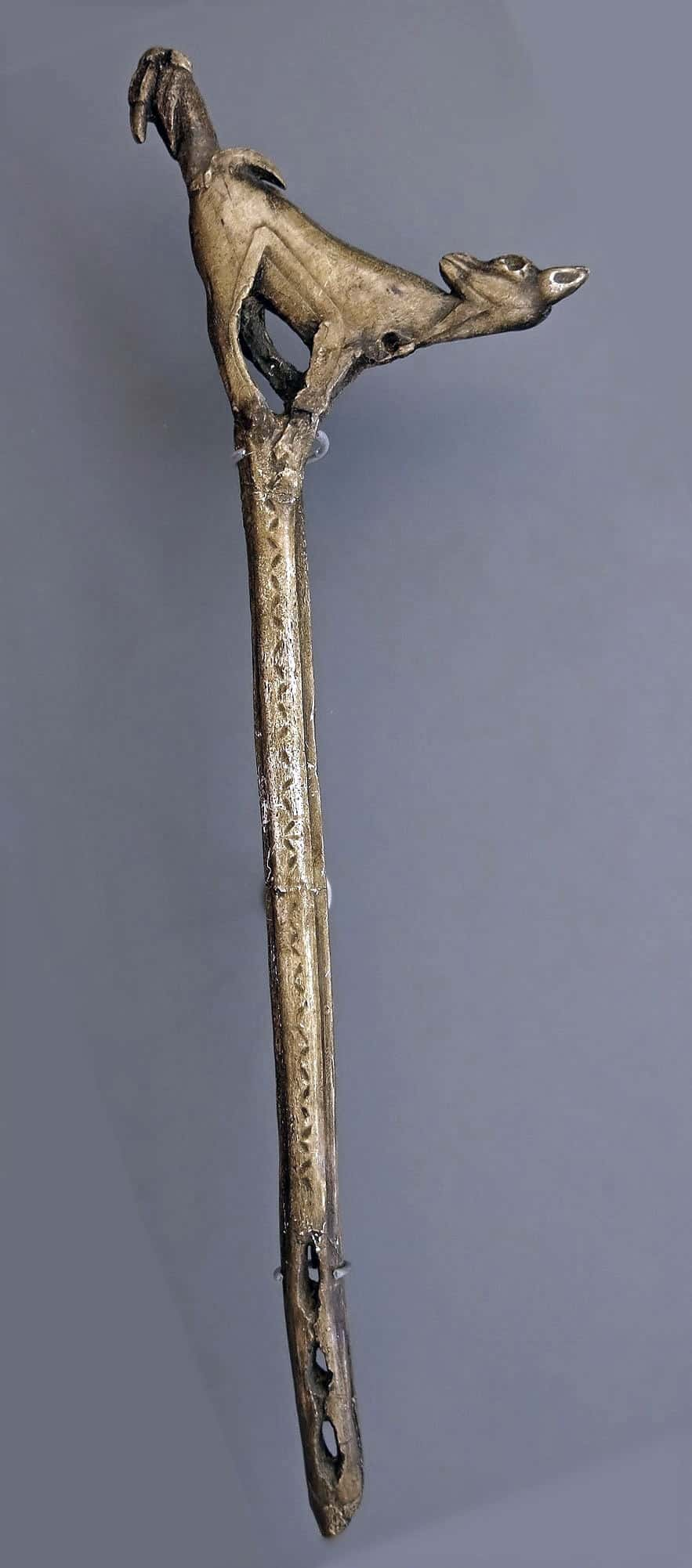
In official contests, distances of up to 460 feet (140 m) were recorded. However, the average hunting distance back in the day was much shorter, at about 100 feet (30 m) or less.
How Does Atlatl Work?
The atlatl acts as an extension of the human arm, effectively lengthening the arm’s lever to increase the initial velocity of the spear. By utilizing the lever effect, the force is better transmitted to the dart or spear, resulting in greater speed and power during flight and allowing for longer, more accurate, and more powerful throws. The atlatl quadruples the kinetic energy of the arm and transfers it to the arrow. This is the reason for the much greater speed of the arrow when using an atlatl.

While the atlatl can also launch ordinary darts or spears, specialized spears designed for use with the atlatl are preferred for maximum efficiency. These specialized spears have feathers on the back end, making them resemble large arrows rather than typical spears. The feathers provide more stable flight trajectories and longer ranges, resulting in greater killing power.
Similar to arrows launched from a bow, spears launched from an atlatl do not fly straight toward the target. Instead, they twist and turn like a snake in flight, which actually improves their stability. Therefore, elastic materials are preferred for spear construction.
The Importance of Atlatl

Compared to using only the arm for throwing, the atlatl significantly extends the range and accuracy of human attacks, making it an essential tool for personal safety during hunting.
Before the invention of bows and arrows and javelins, humans had to hunt large animals up close with long spears, engaging in face-to-face combat with the prey. Those who participated in such hunting were typically members of the tribe who were best suited for reproduction and skilled in hunting. When such members were lost in hunting (which often happened), it could lead to an imbalance in the fragile ecological balance of the group, potentially leading to the extinction of the tribe.
The invention of the atlatl allowed humans to launch deadly attacks from several dozen meters away, increasing the flexibility of hunting without having to get too close to the prey and risk startling it. It also protected hunters’ safety, even when hunting large game or predators such as wild boar, wolves, leopards, lions, mammoths, and bears.
Why Did Europeans Start Using the Bow Instead of the Atlatl?
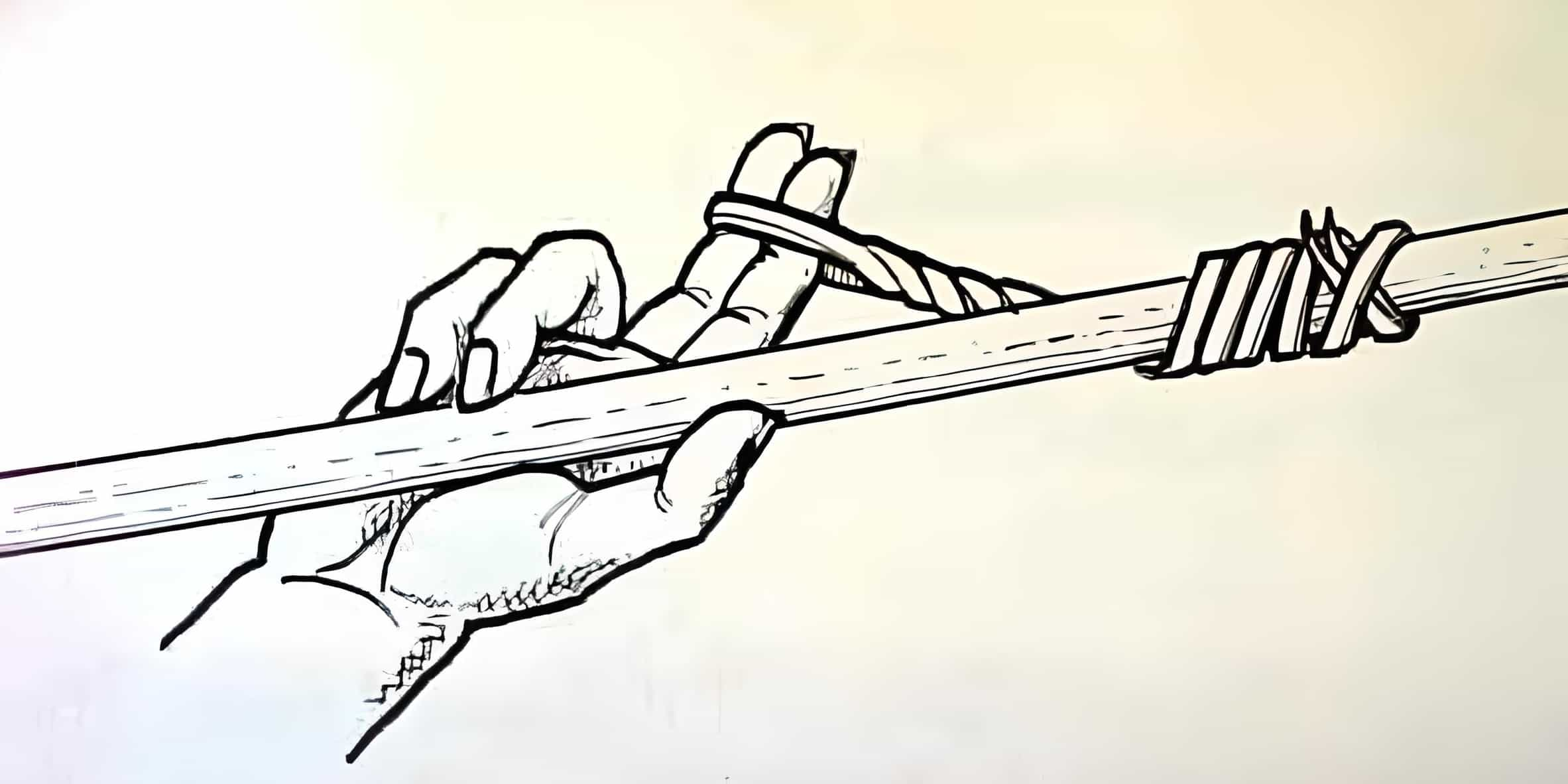
In Europe, the spear-thrower was replaced by the bow and arrow during the late Neolithic period (10,000–2200 BC). This was because:
- The bow and arrow were easier to use.
- The accuracy of the bow and arrow was less affected by the elasticity and weight of the projectile. Therefore, even with a significant difference in arrowhead shape, arrows shot from the same bow could still hit the target close to each other. However, for the atlatl, the flint arrowheads needed to be shaped consistently to be effective.
- Additionally, the spear thrower or atlatl had limited range. After the Iron Age, Europeans used lightweight javelins with cords to increase throwing power and improve accuracy by adding spin to the javelin.
Atlatl for Hunting

As long as the spears thrown from the atlatl were accurate, they could easily take down these dangerous animals with a single blow. This significantly reduced the danger of hunting and increased the success rate of hunting. Therefore, many scholars argue that the invention of the atlatl marked the beginning of humans’ dominance over all animals.
Since spears are much heavier and larger than arrows, they can cause more damage, easily penetrating the scales and thick hides of animals. The primitive tribes in the Amazon basin used atlatls to hunt bony fish such as arapaima.
The atlatl, or spear thrower, played a role in the extinction of many large animals, and some scholars suggest that the extinction of prehistoric large animals such as mammoths was directly related to the atlatl. Scholars have discovered suspected atlatl wounds on mammoth bones and even atlatls carved into mammoth shapes, indicating a strong directional meaning.
The invention of the atlatl allowed primitive humans to safely kill huge mammoths, short-faced bears, and woolly rhinoceroses from relatively safe distances. Some African tribal hunters are still using atlatls to hunt elephants, hippos, lions, and large antelopes, and they can shoot them pretty easily. The fact that humans climbed to the top of the food chain is not without reason.
How to Make an Atlatl Spear Thrower
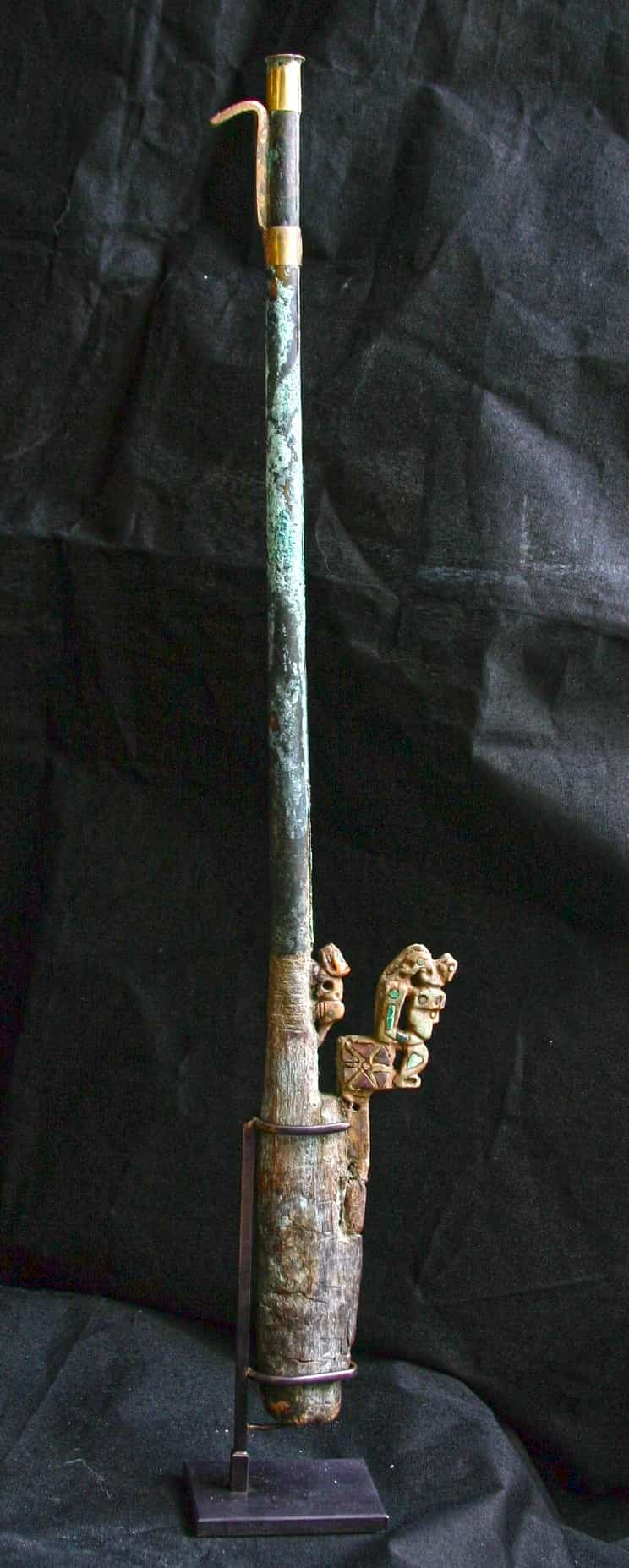
Moreover, the structure of the atlatl is very simple, and primitive humans could easily make an atlatl using readily available flint, animal bones, and deer antlers. Even if there were no antlers or animal bones, a tree branch over 1 foot (30 cm) long with a slight curve and a branch would suffice.
When making an atlatl, one can cut a branch of a tree, leaving 0.8 to 1.2 inches (2 to 3 cm) for a hook to grip the spear. The other branch serves as the main body and handle of the atlatl. If a suitable branch is not available, a wooden stick of 10 to 20 inches (or several tens of cm) can also be used.
The branch can be slightly curved, but even a straight stick can be bent to the desired curvature by heating it over a fire. Then, a 0.8–1.2-inch (2–3 cm) pointed tip can be attached to the end to grip the end of the spear.
Making an atlatl from bamboo
Some hunters of certain ethnic groups use bamboo to make atlatls. They break open a bamboo with a diameter larger than their wrist, remove all but the end node, and carve the remaining half into a suitable size. Then, they boil or roast the bamboo to bend it into the desired shape and attach a 0.8 to 1.2-inch (2 to 3 cm) pointed tip to the end for gripping the end of the spear.
Knowing the principle of an atlatl makes it very easy to make one. Some atlatls may have a spear rest and weight design, but they are not necessary. However, they improve the power and comfort of the spear thrower.
Types of Atlatls
Woomera spear thrower

Early human ancestors invented many types of atlatls. Some types can not only project spears, but also be used as water scoops. The “Woomera spear thrower” used by Australian Aboriginals is one such example. Its shape is elliptical, resembling a paddle. The middle part is very wide and has a groove, which can be used as a water scoop or a food tray. The handle end is also tied with a sharp stone blade for cutting and can be used as a shield in close combat.
Therefore, the Woomera spear thrower is a multiple combinations of a dagger, container, shield, and atlatl, which is a very clever design.
Aztec atlatl

In addition to the Woomera atlatl, many atlatls in the Americas are designed with weights and finger grooves. These spear throwers are generally called “Aztec atlatls”. The word atlatl (pronounced AT-lat-uhl) comes from the Nahuatl language of the Aztecs.
The main body is slender and lightweight, so the inventor attached a weight stone to the lower end to improve the center of gravity and power of this atlatl.
In addition, the handle of the Aztec spear thrower is designed with two finger grooves (one on each side of the handle). The material of the grooves is sometimes braided leather attached to the handle, and sometimes they are drilled and carved into the handle itself.
Using the Aztec atlatl
When using the atlatl, the index and middle fingers of the user pass through the grooves, which provide better stability for the spear and allow for greater force to be applied. Unlike most spear throwers, where the palm faces the user, the Aztec spear thrower is held with the palm facing forward, allowing for more efficient use of force and a more comfortable wrist position while also increasing the force of the throw.
Of course, some users may prefer to use the thumb and index finger through the grooves while gripping the handle with the remaining three fingers, depending on personal preference.
How the Aztec Weapon Atlatl Terrified the Spanish Musketeers

After Columbus “discovered” the Americas, many Spanish colonizers and conquerors flooded into the continent with their iron and gunpowder weapons, eager to seize gold, silver, and land. They used their advanced weaponry to conquer and subjugate Native Americans, including the Aztecs, who resisted European colonization with their own weapons, including the atlatl.
In some Spanish colonial diaries, there are records of Native Americans using atlatls for hunting and attacking Spanish colonizers, making it one of the few formidable weapons at their disposal. With the atlatl, Native Americans could launch attacks from tens or even hundreds of feet away, and though their spears could not penetrate the armor worn by Spanish conquistadors, who generally did not wear full body armor for mobility reasons, there were many parts of the body left unprotected, such as the thighs, which if struck by a spear could cause extreme pain and even disable the soldier.
Moreover, many Spanish colonizers could not afford to buy full suits of armor, and only wore cotton armor, which could easily be penetrated by obsidian-tipped spears, leaving a gaping hole in the soldier’s body. Thus, the Aztec atlatl left a lasting impression on Spanish conquerors who were armed with steel swords and guns, and even arquebusiers at times feared the weapon.
Atlatl Sport and World Records
The atlatl is still used in modern times by some sports associations for contests. David Ingvall, of Aurora, Colorado, set a new world record for the atlatl in July 1995 by throwing a distance of 848.56 feet (258.64 meters). He propelled an arrow with an atlatl made of carbon fiber, titanium, and a shaft of metal. And the world record for a traditional atlatl that is made of wood, antler, and bone is 581 feet or 177 meters.
Chronology and Distribution of the Atlatl
Studies show that the thin ivory tips from the Pavlovian culture (around 25,000 BC) were only made to be used as the tips of atlatls. This assumption is plausible but not proven. The same applies to the delicate back knives and tips of the Gravettian industry (33,000 BC), which may have been used as shaft reinforcement in atlatls.
The oldest hook end as direct evidence of the atlatl comes from the Grotte de Combe Saunière (Combe-Sauniere Cave) (layer IVb) in France and is attributed to the late Solutrean industry (18,000–16,000 BC). However, the majority of the hook ends of the atlatl come from the “Middle Magdalenian” (stage “Magdalenian IV,” around 14,700–13,400 BC). The combination of spear and spear thrower is the oldest complex hunting weapon of humanity—probably several thousand years older than the hunting bow based on current findings.
The focus of the distribution of atlatl findings is in southwestern France, with some finds from northern Spain (El Castillo cave), Switzerland (Kesslerloch), and Germany (Teufelsbrücke in Thuringia). The finds from Switzerland and Germany are particularly noteworthy because they can be assigned to the type of “rudimentary horse head” atlatl whose main distribution area is about 620 miles (1000 km) away in southwestern France. And this missing link from the core area to Switzerland and Thuringia in Germany is often used as an argument for atlatls made entirely of wood (because of their lack of durability in nature).
In later times, the atlatl was archaeologically and ethnographically documented worldwide in Micronesia, Australia (called Woomera), New Guinea, and among the Eskimos (Inuits). In America, the Aztecs used the spear thrower and called it the atlatl, whose construction differs somewhat from the spear throwers on the other continents, as a weapon of war.
Spear throwers can also be found in the iconography of the Inca, Wari, Tiwanaku, and Moche.
Categorization
Some researchers divide ethnographic atlatls based on their construction characteristics, such as hook throwers, groove throwers, which are made from a single piece and have a grooved depression at one end, and hook-groove throwers, a mixed type with a small hook. There is no archaeological evidence for groove throwers. In New Guinea, spear throwers are found that are hollowed out at the end, while the spear has a barb.
As additional criteria for distinguishing archaeological spear thrower hook ends, researchers use the manner of the base design (unilateral or bilateral sloping; perforations) and decorations (unadorned; engravings or ornaments; figurative decorations). The figurative decorations consist of animal representations and possibly anthropomorphic representations. Some findings have distinct similarities in their design, leading to the highlight of two types of groups in particular.
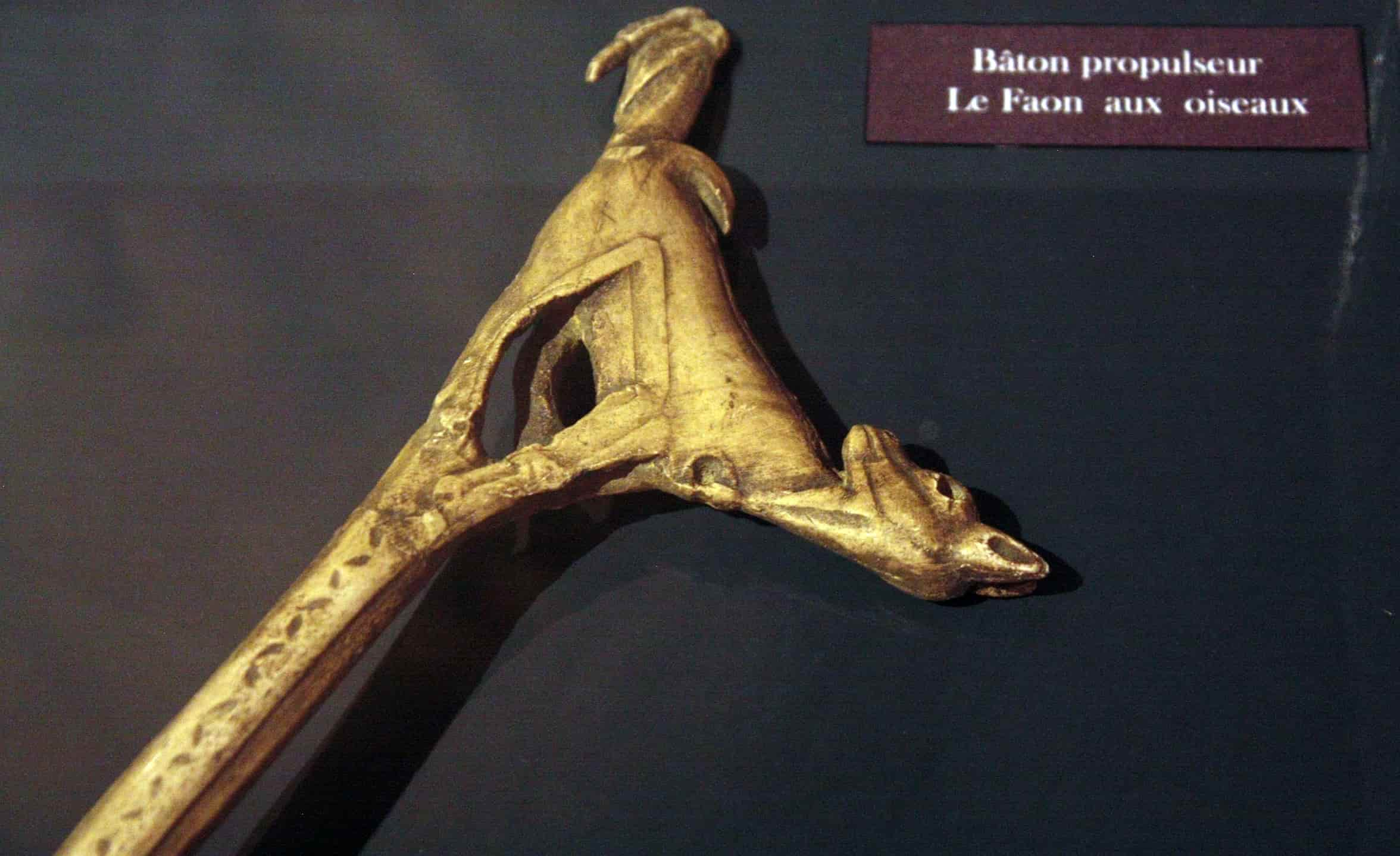
One is the “faon” (fawn) atlatl spear throwers. It is a long-carved piece of reindeer bone decorated with carved ibex and birds. The functional end is carved into the shape of a recumbent or standing ibex looking backward, with one or two birds on the tail tip and a bird’s tail as a hook.
The other group of atlatls is the “rudimentary horse head” type, in which the functional end is shaped like a horse head facing in the throwing direction, and the forelock serves as a hook – in some cases, horse bodies are engraved on the shafts. However, since fragments of this type are usually broken off in the horse head’s mouth area, nothing can be said about their possible regularity.
History of Atlatl Research
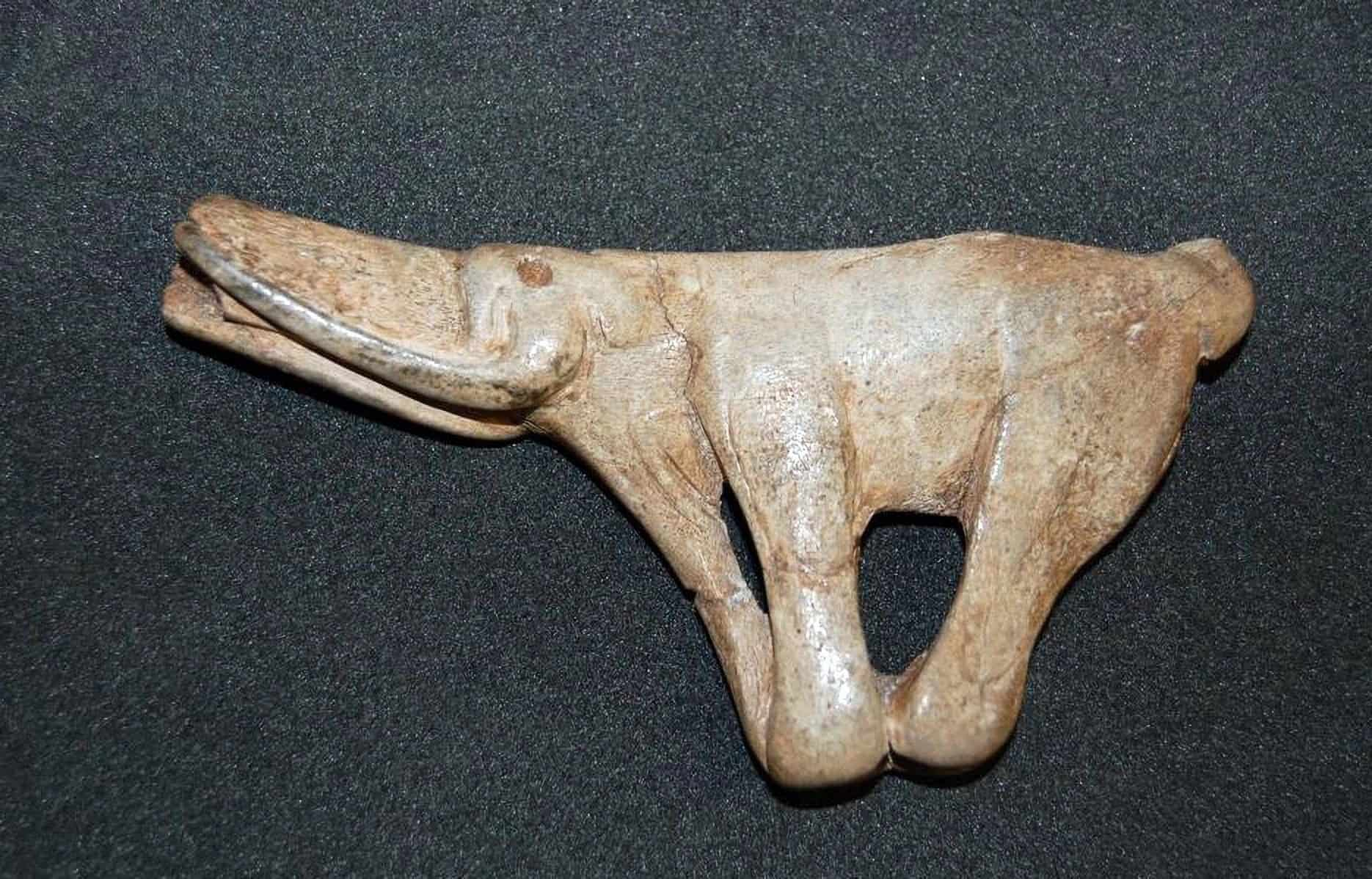
The first finding of an atlatl or spear thrower was excavated by the French paleontologist Edouard Lartet and the English collector Henry Christy in 1863 during their excavations at the “Abri classique” of Laugerie-Basse (Les Eyzies de Tayac). In the publication of the site in 1864, two fragments of a piece were depicted separately, with the fragment with the hook interpreted as part of a harpoon.
In October 1866, the French researcher Peccadeau de l’Isle discovered the hook-shaped end of a spear thrower fashioned in the form of a mammoth during his excavations at the Abri Montastruc rock shelter (Bruniquel). A new hook was inserted into this piece, as the original, in the form of the raised tail of the animal, was likely broken off during use. The excavator regarded this piece as the handle of a dagger.
Around the same time in 1866, the Vicomte de Lastic Saint-Jal examined the nearby Grotte du Roc du Courbet (“Grand Roc Cave”) (Penne), which is also located in the Aveyron Valley. He recovered numerous finds, including three atlatl hooks that were also not recognized as such.

In the 1870s and 1880s, Edouard Piette examined various sites in the Pyrenean foothills, including the Grotte de Gourdan in 1871, the Grotte d’Espalungue (Arudy) in 1873, and the Mas d’Azil Cave in 1887. All three sites contained hook ends that were not recognized as such at the time of excavation.
Arthur de Maret excavated Le Placard in 1879, where he found hook ends that also went unrecognized.
After comparisons with spear throwers from Australia, Central, and South America, and those of the Eskimos, the French prehistorian Adrien de Mortillet expressed the assumption in an article from 1891 that the excavated hook-shaped objects could have been used for the same purpose. He referred primarily to the piece excavated by Lartet and Christy from Laugerie-Basse. Mortillet was thus the first to publish the correct interpretation of the atlatl finding, but as it later turned out, he was not the first to recognize it.
In 1903, Émile Cartailhac published several hook ends from the stations of Bruniquel. He also correctly interpreted the function of the pieces and made ethnographic comparisons, as Mortillet did in 1891. The special feature of this publication was the reference to a letter he found in the university library of Toulouse, written by a member of the “Geological Survey of Ireland” on September 27, 1864, and addressed to Edouard Lartet. The unidentified author, who also used ethnographic comparisons with Australian spear throwers to argue his case, had correctly interpreted the function of the first hook end found by Lartet and Christy in the same year.
In 1907, Henri Breuil, in an article co-written with Emile Cartailhac about the small Paleolithic art objects of the Vibraye collection, listed all 34 atlatl hook ends that were known at the time.

In the first half of the 20th century, further examples of atlatl hooks were discovered during excavations at other sites or through continued work at previously known locations. These included the Saint-Michel Cave (F. Mascaraux 1910), La Madeleine (Abri) (L. Capitan and D. Peyrony 1928), and the caves of Isturitz and Oxocelhaya (R. de Saint-Périer 1936; E. Passemard 1944). These publications provide comprehensive descriptions of the archaeological sites, but the atlatl hooks are not given special consideration and are treated as one among many types of artifacts.
Other newly discovered atlatl hooks were described in separate articles, such as those found at Grotte d’Enlène (H. Bégouën 1912; R. Bégouën 1986), Grotte du Mas d’Azil (M. and S.-J. Péquart 1942), Kesslerloch (W. U. Guyan 1944), Grotte de Bedeilhac (R. Robert 1951, 1953a, 1953b), Canecaude I (D. Sacchi 1975), and Combe Sauniére 1 (P. Cattelain 1989). However, these articles provide fewer comparisons with other finds and focus primarily on describing the individual artifacts, often highlighting aspects of their artistic design.
In 1955, the English archaeologist Dorothy Garrod wrote a longer article about the 66 known Upper Paleolithic atlatl hooks. It was published in the Proceedings of the Prehistoric Society. She talked briefly about the history, timeline, and location of the finds, but her main goal was to put them into groups.
She thought that the design of the hook end was the most important way to tell them apart. She called “unweighted throwers” those with simple, lightly decorated shafts and “weighted throwers” those with bigger, animal-shaped hooks. She only briefly talked about questions of function and technology, like shafting, but she made it clear that there needed to be a study that included experiments with reconstructed pieces.
An unpublished seminar paper from 1977 by Jörg Sedlmeier updated Garrod’s compilation to include 79 examples of Upper Paleolithic atlatl hooks. However, it also provided a little discussion of the functional and technological aspects of this famous invention.
Bibliography
- (PDF) Arthur de Maret and his Excavations of the Cave of Le Placard (1877-1888): A Neglected Moment in the Prehistory of the Charente (C. DELAGE 2018), Researchgate.net.
- L. Blackmore. 2000. Hunting Weapons: From the Middle Ages to the Twentieth Century.
- Dorothy A. E. Garrod. 1955. “Palaeolithic Spear-Throwers”.
- Handbook of Celtic and Gallo-Roman Prehistoric Archaeology – Joseph Déchelette – Google Books



